Varicose veins on the legs are a rather dangerous disease for a person, and not just a bluish cosmetic defect.It can lead to significant consequences for the patient’s health, so it is very important to fully understand all aspects and details of the course of this ailment.Possession of correct information can help in the implementation of treatment and paying attention to some characteristic nuances of the disease.
General characteristics and causes of varicose veins
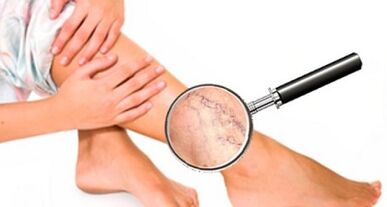
Varicose veins are persistent significant changes in the walls of the vessels of the lower extremities of a person.The deformation mechanism implies an increase in pressure in this part of the body.This is due to the fact that in some cases certain disturbances prevent the normal lift of venous blood from human legs to heart.The function of compensation for the body helps to overcome obstacles, increasing the level of pressure in the vessels and pushing blood up.
As a result of changes in the work of blood vessels, valve failure develops in the lower extremities.It is characterized by the flow of blood from deep veins into superficial ones.Over time, due to the high pressure of the walls of blood vessels, they lose their elasticity, this in turn leads to their stretching and thinning.Following this, on the surface of the skin of the lower extremities, you can see changes that look like knots of bluish or blue.
Varicosis on the legs is a disease that applies not only to the legs, but also to the entire cardiovascular system.This disease can lead to disability of the patient and even death.In view of this, you need to know why varicose veins arise.The reasons for this process are as follows:
- Increasing the level of progesterone in the body of a woman.This hormone adversely affects the condition of the walls of blood vessels and valves.They become quite weak and unprotected.
- Some congenital anomalies and pathologies of the walls of blood vessels or valves.This can be the cause of the poor conductivity of the veins or lack of the function of connective tissue, from which varicose veins also appear.
- Certain neoplasms, both benign and malignant.They affect the appearance of the disease not only in the case of localization on the lower extremities, but also in the abdominal cavity.
- Various injuries, bruises and legs damage.
- Different diseases of the endocrine nature.
- Thrombophlebitis - thrombosis veins with an inflammatory process affecting the walls of blood vessels.
- Some joint diseases.These include mainly osteoporosis and rheumatoid arthritis.
- Taking certain drugs based on hormones.
- A sedentary lifestyle.Such passive human behavior causes manifestations of stagnant phenomena in the legs.
- Increased pressure in the intra -abdominal region.Most often, it appears due to constant constipation or some problems with lungs in a person.
- Excess body weight.As a result, too much load is valid on the lower limbs.
- Wearing incorrectly selected shoes and clothes.First of all, this applies to the tight things of the wardrobe.
- Irrational nutrition with a predominance of high -calorie and fatty foods and almost a complete absence of plant fiber.
- Some adverse habits, such as smoking and drinking alcohol.
Signs of varicose veins appear due to all of the above causes.Therefore, people who are at risk should be extremely attentive to their own health.
The first symptoms and signs of varicose veins
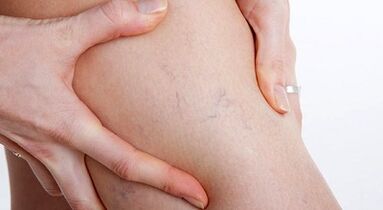
In order to pay attention to the disease in time, you should understand what are the signs of varicose veins on the legs.The following symptoms should be noted:
- The appearance of pain in the legs of pain.Moreover, it can be of a different nature of the occurrence.When walking, painful sensations, most often pulsating and hot, while in a calm state the pain is breaking.
- The occurrence of seizures at night during sleep or lying on the bed.
- The manifestation of some changes on the skin of the limbs.They are dark spots, nodules and swelling.The skin is dry enough.These signs of varicose veins are already indicated by certain changes in the vessels.
- Feeling of heaviness in the legs.A sick person may feel a certain bursting that comes from the inside.Most often, this happens in the evening after a long stay in activity.
- Thickening of the veins of the lower extremities.They can appear from under the skin, creating a fairly clear pattern of their location on it.
The first signs of varicose veins on the legs should be a factor pushing a person to contact a medical institution.The longer the patient will hesitate, the more the disease will progress.This, in turn, affect the intensity of the manifestations of symptoms and the complexity of treatment.
Over time, varicose veins acquires rather serious symptoms.They are extensive eczema and trophic non -healing ulcers.In severe cases, they can go to gangrene.If the treatment of varicose veins on the legs is not undertaken, the progression of the disease can even end with amputation of the limbs.This will be necessary so that blood infection through open wounds does not occur.
Despite this, the most dangerous consequence of the disease is still the formation of blood clots.They can fall into any part of the human body, blocking the blood flow there.As a result, strokes and heart attacks that lead to deaths occur.
Methods of treatment of the lower extremities
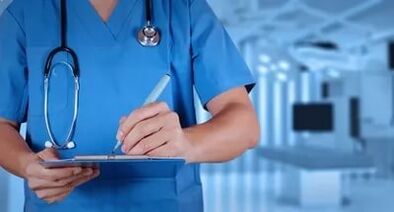
Treatment of varicose veins on the legs is currently in various ways.The following methods of combating the disease can be distinguished:
- Conservative.Most often, this method is used in the early stages, when only the first signs of varicose veins on the legs occurred.
- Sclerotherapy.Doctors recommend such treatment in cases when a conservative technique has not given results.
- Surgical.Surgical intervention, as a method of getting rid of varicose veins on the legs, is shown in cases where the disease threatens the patient's life.
In addition to the above treatment methods, experts recommend tidying up the veins on the legs against the background of a diet and the corresponding gymnastic and physiotherapeutic procedures.Only an integrated approach can give a really good result and getting rid of the disease.
Creams and ointments
One of the most popular ways to influence veins damaged by varicose veins is to apply various creams and ointments to the skin of the legs.Such local therapy is quite safe for human health.It rarely causes side effects and has a small number of contraindications.
Doctors recommend using the following drugs in case of varicose veins:
- Heparin -based products.They have a absorbable property, preventing stagnant phenomena and the appearance of blood clots.The main active components of such drugs are heparin - a natural anticoagulant.
- Funds based on venactive components.The effect of these drugs is to reduce pain and strengthen blood vessels.Their main components are horse chestnut, Donnitsa medicinal and Iglitsa.
- Nesteroid drugs.These means are distinguished by anti -inflammatory effects.
- Funds based on glucocorticosteroid hormones.These drugs have a very good anti -inflammatory and antihistamine effect, while having many side effects and contraindications.
Varicosis has various symptoms, based on which the selection of drugs should be carried out.Only a qualified specialist should do this.
Drug treatment
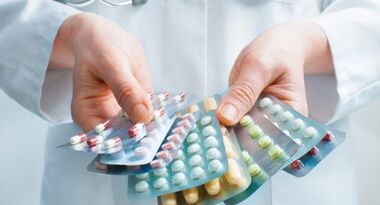
Often, the action of local drugs should be supported by systemic therapy.It consists in taking medications of the following groups:
- Venotonics.The action of these tools is based on an improvement in the elasticity of the walls of blood vessels, restoration of tissues and improve blood circulation.
- Anticoagulants.These products reduce blood coagulation, preventing blood clots and clots.
- Antiplans.Such drugs are used in case of blood clots.
Varicose veins on the legs must be treated only in accordance with what symptoms it caused.The doctor should prescribe the drugs after examining the patient.It is strictly forbidden to carry out therapy independently.
Sclerotherapy
Varicose veins on the legs can be eliminated by treatment using a method such as scleropathy.It implies the introduction of a special drug into a vein of a sick person.It has properties affecting the sclerosis of the walls of blood vessels.Through this effect, they stick together, which is why the blood stops moving.That is, in this way, in essence, the Vienna damaged by high pressure is blocked.
Scleropathy is carried out only under local anesthesia.General anesthesia for such a procedure is not required.After it, the doctor must apply the appropriate bandage on the patient’s leg.In order to consolidate the achieved positive result of this treatment, the patient must wear special compression underwear in the future.Relapses of the disease may occur without it.
Laser therapy
Recently, some experts use a laser to treat veins.The essence of this method is the thermal effects on the walls of the damaged vessel to close its lumen.Such treatment takes place on an outpatient basis, that is, immediately after the procedure, the patient can return home.
Before treating veins with a laser, it is worth knowing that this method does not allow to independently completely get rid of the disease.The sick person will need to undergo a course of treatment in the future.Often, after laser therapy, the wearing of compression linen is prescribed, in which the vessels do not expand.
Surgical intervention
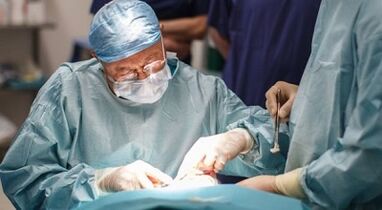
Operations for varicose veins are carried out only in cases where other treatment methods have not given a positive result.That is, such therapy of the disease is a forced measure with the most pronounced signs of the disease, when the patient’s life and health are at risk.
Doctors can make several different types of surgical intervention depending on the specific situation:
- The implementation of three small incisions through which the damaged vein is removed.
- Extending a variable vein with a single incision with the subsequent dressing of nearby vessels.
- A small incision of the skin in order to dress the sore vein in the location of the non -functioning valve.
- Full removal of varicose areas along with veins and nodes.Usually in such cases there are trophic ulcers that need to be cleaned.This type of operation is considered the most difficult.It is carried out to save the life of the patient.
In order not to bring the situation to a critical state, you need to pay attention to all signs of varicose veins on the legs.Timely seeking a doctor can save a person from the need to carry out surgical intervention.
Ozonotherapy
One of the methods of influence on damaged areas of blood vessels is ozone therapy.It is a new methodology for the treatment of vascular "stars".Its essence lies in the fact that a small amount of ozone is introduced into the lumen of the vein, which glues it, blocking the flow of blood.Thus, the damaged vein stops working, and its functions switch to healthy vessels in the leg.
To achieve a good result from ozone therapy, just a few procedures are enough.Before treating varicose veins in this way, it is worth consulting with your attending physician.
Flebectomy
One of the types of surgical intervention to eliminate varicose veins is flteectomy.It is an operation that consists in the implementation of several small cuts and the removal of a damaged vein.
Immediately after the completion of surgery and the imposition of a special bandage, the patient can go home.At the same time, he should wear special compression linen, tightening his leg.After surgery, wounds after some time become almost invisible and do not represent any cosmetic skin defect.
Folk methods of treating varicose veins
.jpg)
Treatment of varicose veins can be carried out in various ways.Traditional medicine also helps a large extent in this.Most often, its recipes should be used only in the early stages of the development of the disease, since in other cases their use is to no avail.This is primarily due to the fact that with the progression of the disease, its consequences can correct only more radical measures.
The following useful and satisfied recipes in some cases can be distinguished: recipes:
- Infusion of dried nettle leaves.To do this, they should be thoroughly chopped and poured with boiled water, after which the liquid should be poured into a thermos.It should be infused for about 30-40 minutes.As soon as this is done, the liquid should be filtered.It is necessary to take a “medicine” 1/3 cup three times a day 1 hour after each meal.With varicose veins, such treatment helps only in the early stages, when there are no changes in the vessels.
- Potato gruel.This “medicine” helps mainly from ulcers caused by varicose veins.One potato should be well chopped with a grater, and then put the resulting material on a wound of 1 cm. On top of the gruel, you need to cover with several layers of gauze and after 4-5 hours the potatoes can be removed from the wound, replacing it with a new one.
- A decoction of hop cones.You will need one tablespoon of this drug ingredient.It should be chopped and poured with 200 milliliters of boiling water, after which the liquid should be cooked in a water bath for about 15 minutes.The resulting broth must be taken three times a day, one glass before meals, they can also lubricate varicose veins on the legs.Some people make lotions based on a decoction of hop cones.
Before treating varicose veins with folk methods, you should definitely consult your doctor.You can get rid of this disease in far from all ways, which is associated with the individual characteristics of the body and the presence of certain complications that only the specialist can take into account.
Special underwear
Quite often, compression knitwear is used to maintain the lower extremities in the correct physiological state.It is a special anti -vevalic underwear that has a therapeutic effect on a person.
The mechanism of action of the hosiery and reference products implies the redistribution of the blood flow from damaged veins to healthy.This helps to improve the nutrition of nearby tissues and increase blood circulation.
It is very important to choose its correct size when choosing linen.It is best to help the attending physician or other specialist help it.Also, all aspects of using compression knitwear should be found out.Quite often, the treatment of varicose veins should be carried out only against the background of wearing such products.They accelerate the process of therapy, thereby reducing the risk of blood clots.
Exercises from varicose veins
Certain physical exercises are a fairly effective prevention of varicose veins.They should be moderate enough, but intense.Separately, doctors recommend throwing their legs above their heads, thus allowing to move blood from the feet.The provisions when the lower limbs are above the level of the whole body have established themselves as the most effective from varicose veins of the lower extremities.
The following exercises are useful:
- It is necessary to climb to the socks so that the heels by 2 centimeters move away from the floor, after which you need to sharply sink to the feet.Repeat such an action at least 30 times.As soon as this is done, you can relax for about 10 seconds, after that you should repeat the rise again.It is necessary to exercise in this way about 3-5 times a day.
- Having taken the position of lying down, raise the right leg up.Having relaxed it, you need to sharply shake the feet, after which the leg can be put on the floor.Repeat the same action with the left limb.This exercise will be useful if it is done from 10 to 20 times.A sufficient number of approaches - from 3 to 5 per day.
The vibrationymnastics of the famous academician also established itself well.Before proceeding with such treatment, you should consult a doctor.
Diagnostics
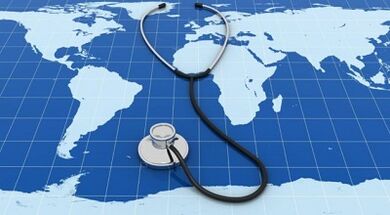
The first symptoms of varicose veins on the legs do not appear very brightly, so quite often patients seek help only in the later stages.In such cases, you can already see certain changes on the skin.That is why the doctor can make a diagnosis only by external examination of the lower extremities of the patient, this is even a novice specialist.But most often the diagnosis is not limited to this.Some additional methods of examination can be assigned, among which the following must be distinguished:
- Ultrasound floometry or dopplerometry.These diagnostic methods allow you to determine the flow rate of blood flow, as well as the level of vascular filling.
- Pertes, Sheinis and Pretty tests.Their positive result can indicate the development of varicose veins even without its external manifestations.
- Phlebomanometry.This diagnostic method determines the venous pressure in the vessels of the legs of a sick person.
- Scanning veins.This examination method allows the attending physician to evaluate the condition of the walls of blood vessels and valves.
- Phlebography.This procedure is quite invasive.This is due to the introduction of a special contrast matter into the bloodstream that an X -ray recognizes.Moreover, such an examination is as informative as possible.
- Echosclerotherapy.To undergo this research method, a special substance is introduced into the patient's vein - sclerosant.After that, the legs of a sick person are scanned.
- Thermography.Such an examination using IR radiation helps to evaluate the functionality of the veins of the lower extremities.
- Computer phlebography.This method is a relatively new and more modern analogue of ordinary phlebography.
- Fleboscintigraphy.This examination evaluates the veins and lymph nodes of the legs of a sick person.They can also contain certain changes that should be taken into account when prescribing treatment.In this case, radionuclides are used for visualization.
- Photopletismography.This method is based on the use of photodiods.
With varicose veins, the patient can be prescribed by one or two examination methods, since many of them give similar results.A qualified doctor can draw conclusions after the usual scan.
Consequences and complications with a neglected form of varicose veins
Varicose veins are a dangerous ailment that leads to serious consequences and complications.Among them, the following can be distinguished:
- The acute stage of thrombophlebitis of surface veins.
- Trophilical ulcer.
- Phlebotrombosis.
- Chronic venous deficiency.
Also in advanced cases, varicose veins contributes to a significant formation of blood clots.This can lead to strokes and heart attacks.Turning away from the wall of the vessel, a clot of blood can cause a person’s death.
When to contact a doctor and to what
Varicose veins requires that treatment passes as correctly and in a timely manner.It happens that a sick person for a long time does not turn to a medical institution for help.This attitude to your own health is not right.The patient cannot independently cope with the disease.What to do with the disease and how only a phlebologist knows to treat it.It is to this specialist that it is worth contacting if varicose veins or varicose veins arose.When vascular changes are too strong, an angiosurgeon should deal with the patient.
The reason for the diagnosis should be the first signs of varicose veins - swelling, sensation of bursting and pain.As soon as these symptoms occur, you should contact specialists for examination.
Prevention
In order not to wonder what varicose veins are, and how to get rid of its consequences, one should clearly follow some preventive rules.Among them, the following can be distinguished:
- The correct construction of the operating and rest mode.If possible, reduce orthostatic loads.
- Change of body poses with prolonged finding in a sitting position.
- Refusal of the "leg on the leg."
- The kneading of the feet.
- Constant walks in comfortable clothes and shoes.
- Maintaining blood pressure at the norm level.
- Balanced and proper nutrition.
If you adhere to all of the above simple rules, it is possible to significantly reduce the risk of varicose veins or the progression of this disease before complications.























